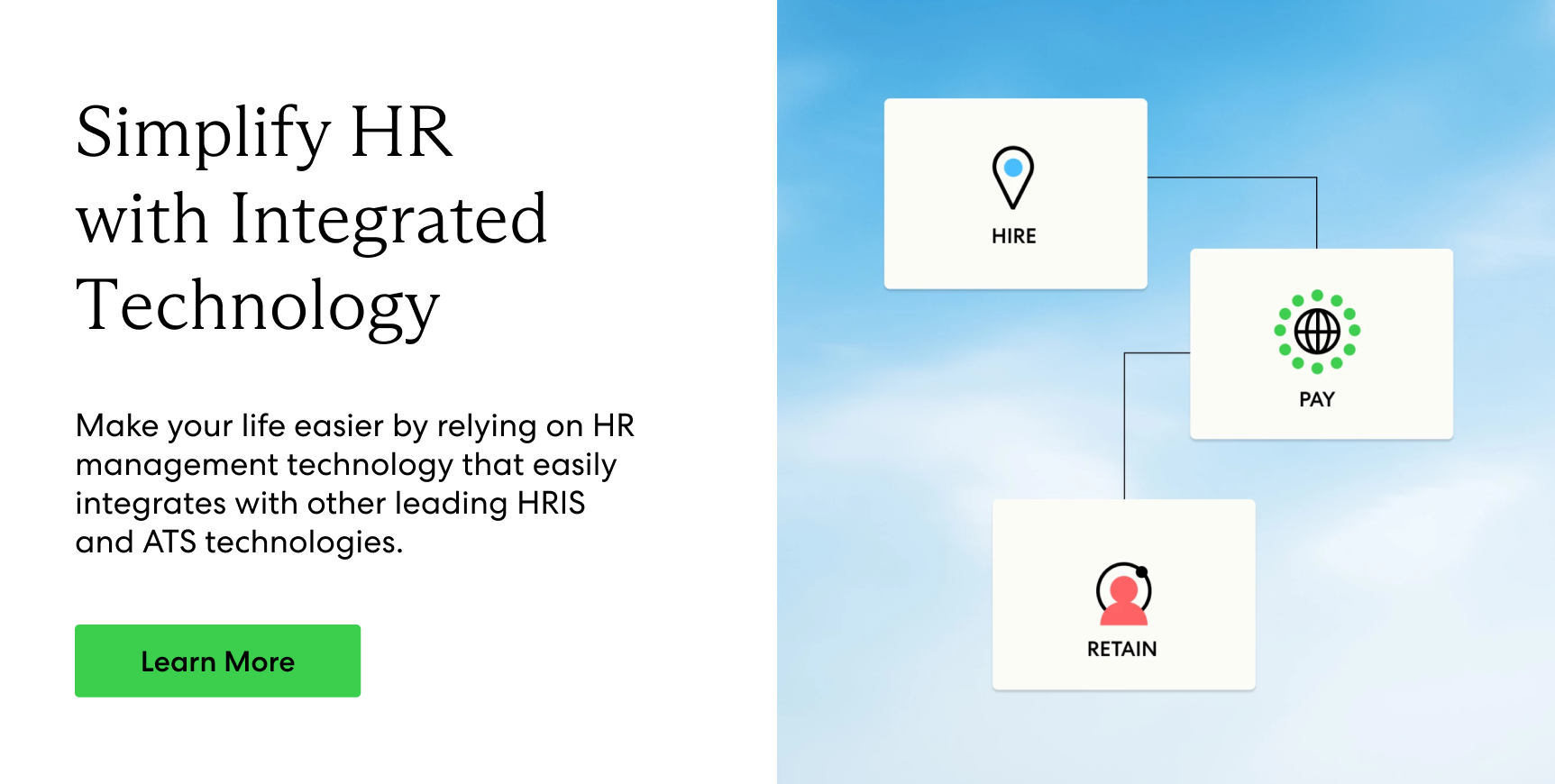After countless hours of sourcing, screening, and onboarding top candidates from across the world, you’ve finally built your global dream team. Now that you have the right people in place, your workforce is ready to take your company to new heights—and all the hard work is behind you.
Or so it seems.
As your distributed team gets to work, you start to encounter unexpected hurdles. Team leaders report that finding time for meetings is complicated when people are spread across time zones. Getting real-time responses to Slack messages or emails is difficult, too. And because your global talent feels pressure to be available when their teammates need them—even if oceans separate them—they’ve expressed concern about the long hours they’re putting in.
Looking for a solution, you go back to the drawing board. How can you maximize your team’s output while accommodating individual schedules, accounting for time zone differences, and ensuring each team member maintains their sanity?
The answer lies in asynchronous collaboration.
While this term may sound complex, it’s actually quite simple—and makes life easier for distributed workforces. Read on to learn what asynchronous collaboration is, why it’s beneficial for global teams, three areas where you can apply it, and five tips for implementation.
What Is Asynchronous Collaboration?
Asynchronous collaboration refers to teams working together without working at the same time. Ideal for hybrid or distributed workforces consisting of teammates across the globe, asynchronous collaboration allows teams to maximize their productivity without being online simultaneously.
When teams collaborate asynchronously, they pass on projects to each other so each team member can contribute at a time that works for them. Asynchronous collaboration does not require teams to hold lengthy meetings, engage in brainstorming sessions, or be constantly online to work through issues together.
Teams that practice asynchronous collaboration communicate through avenues including but not limited to:
- Sharing collaborative documents like Google docs
- Recording video walk-throughs that co-workers can watch at their discretion
- Leaving updates in project management platforms
- Creating resources that other teammates can access at their own pace

At first glance, it might seem contradictory that less time working together leads to more productivity. But as Setty says, companies that shift to hybrid or fully distributed workforce models need to rethink traditional ways of working. Best practices for teams under the same roof don’t always apply to teams spread across the globe. In some cases, they’re actually counterproductive.
That’s where asynchronous collaboration comes into play. For global teams, it’s simply not realistic for everyone to work on the same schedule. But that doesn’t mean team members can’t be on the same page. It just means teams need to adjust expectations for how they get their work done—individually and collectively.
How Asynchronous Collaboration Helps Global Teams
Every HR manager and team leader wants to make it as easy as possible for employees to complete their work. They’re also always looking for new ways to attract and retain top talent. Asynchronous collaboration furthers both initiatives, allowing talent to complete their work efficiently while improving the employee experience. Here are three reasons why asynchronous collaboration makes life better for you, the teams you oversee, and your company as a whole.
Asynchronous Collaboration Boosts Efficiency
While working simultaneously offers many benefits to teams, it can also bring some negative aspects—like too many meetings.
For many employees, meetings clog up schedules, decrease efficiency, and take a significant toll on productivity—regardless of whether they’re working in the office or virtually. For employers, excess meetings add up to enormous costs.
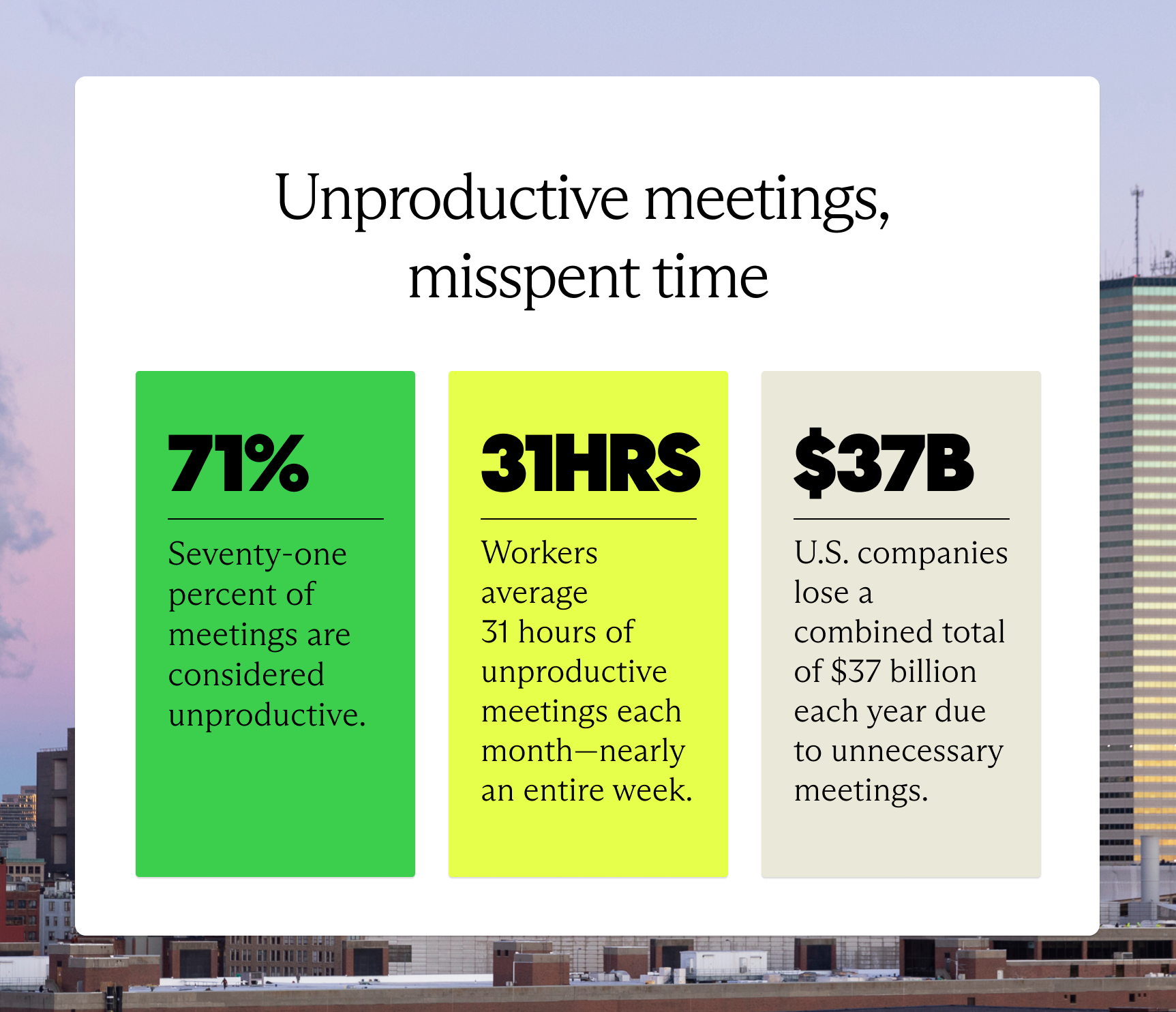
Making matters worse, employees and managers usually spend as much time prepping for the meeting as they do attending it. That means that a 30-minute meeting actually costs each attendee an hour of their day, while an hour meeting costs two hours, and so forth.
Asynchronous collaboration limits the window for meeting times throughout the day, forcing teams to be more efficient when holding meetings—or more judicious about scheduling them in the first place. With less time spent in unproductive meetings, team members have more time to focus on their work.
Asynchronous Collaboration Lessens Burnout
When teams span the world, it’s natural for employees to feel like they have to extend their working hours to be available for teammates across time zones. This is especially acute for new hires who want to make a strong first impression. But even seasoned veterans have trouble logging off at the end of their workdays.
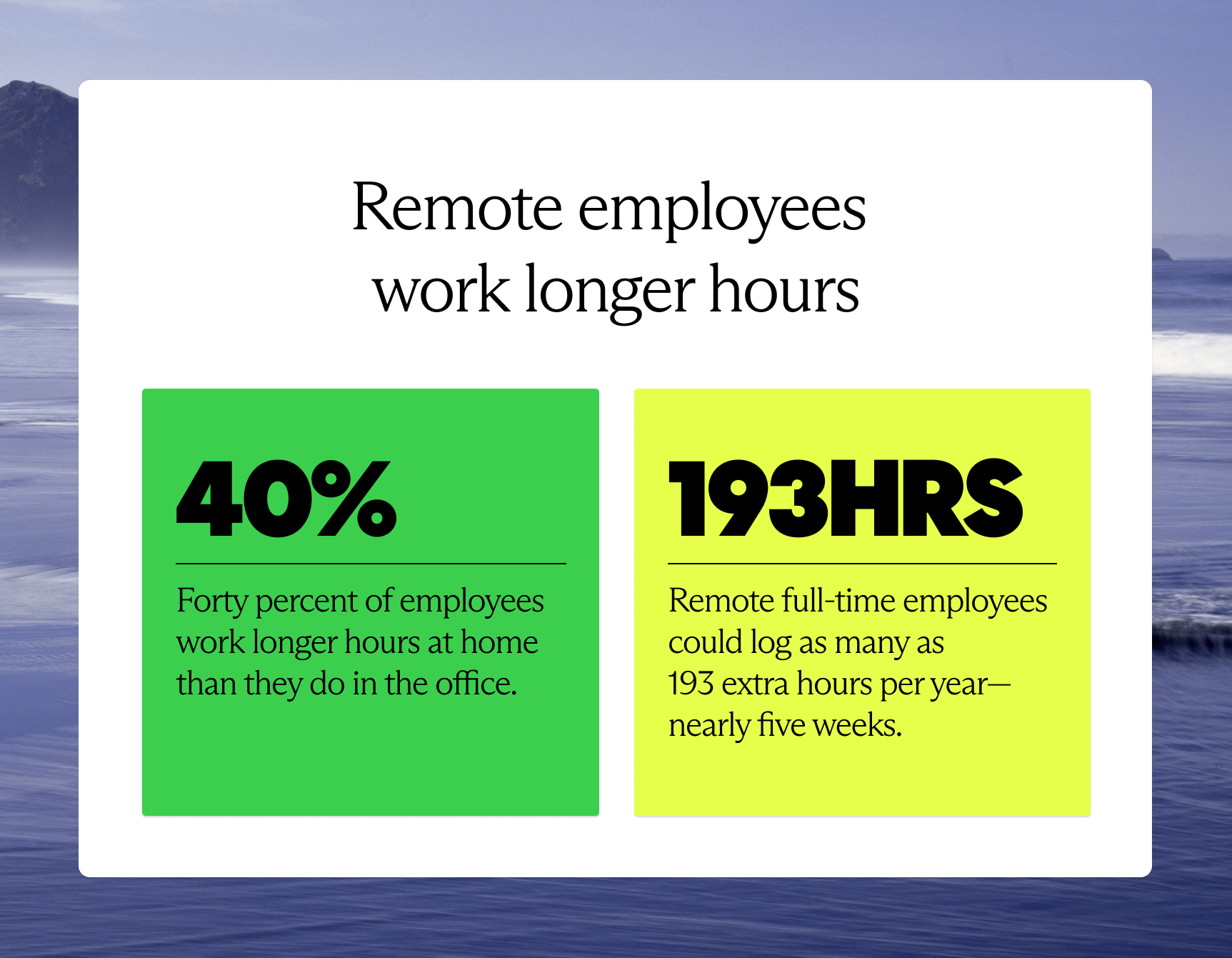
Working long hours and constantly feeling the need to be on-call can quickly lead to employee burnout. Implementing asynchronous collaboration helps your teams minimize that risk. By setting up a system in which employees are only expected to communicate with each other during specific windows of their day, you relieve them of the pressure of being available around the clock—helping them stay engaged and productive for the long haul.
Asynchronous Collaboration Offers Talent Autonomy
The COVID-19 pandemic normalized the concept of remote work for employers and employees across the globe. It also gave talent more control over when and how they work. Now, many workers want to retain autonomy over their working hours even as pandemic restrictions lift and companies call workers back to the office.
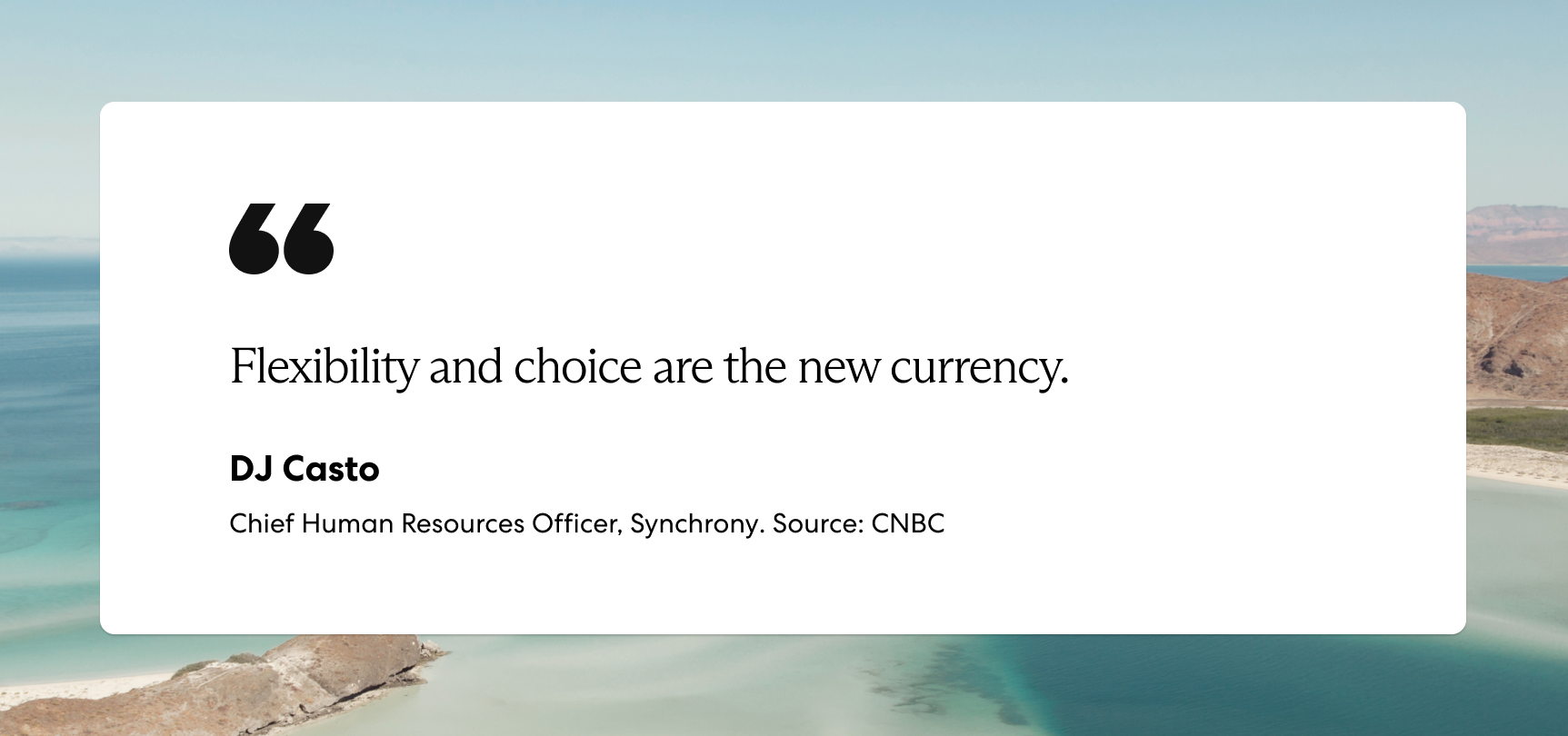
Enabling asynchronous collaboration means employees don’t need to be on-call for more than a few hours throughout the day. As a result, they have the autonomy to plan the rest of their day however they best see fit—and work when they feel most engaged and productive.
Offering employees the autonomy they want also gives you a competitive advantage in a tight hiring market, helping you boost talent attraction and retention by delivering on a huge priority for employees.
Managing a Hybrid Workforce: Three Ways to Collaborate Asynchronously
The benefits of asynchronous collaboration are clear. But what tasks and processes should your team work on asynchronously? Find out by auditing your workflows and honing in on spots where your team spends the most time in meetings. Then determine whether you can bypass face-to-face (or, in this case, camera-to-camera) collaboration and take a more streamlined, asynchronous approach.
Jumpstart your audit process by evaluating three processes that many distributed teams collaborate on asynchronously.
Project Kickoffs
When your entire team works together in the same office, it’s easy to get everyone in one room to kick off a project. That doesn’t hold true when your team is spread across borders and time zones, though. Fortunately, you can efficiently kick off projects without requiring everyone to be online at the same time. Here are three steps for getting started:
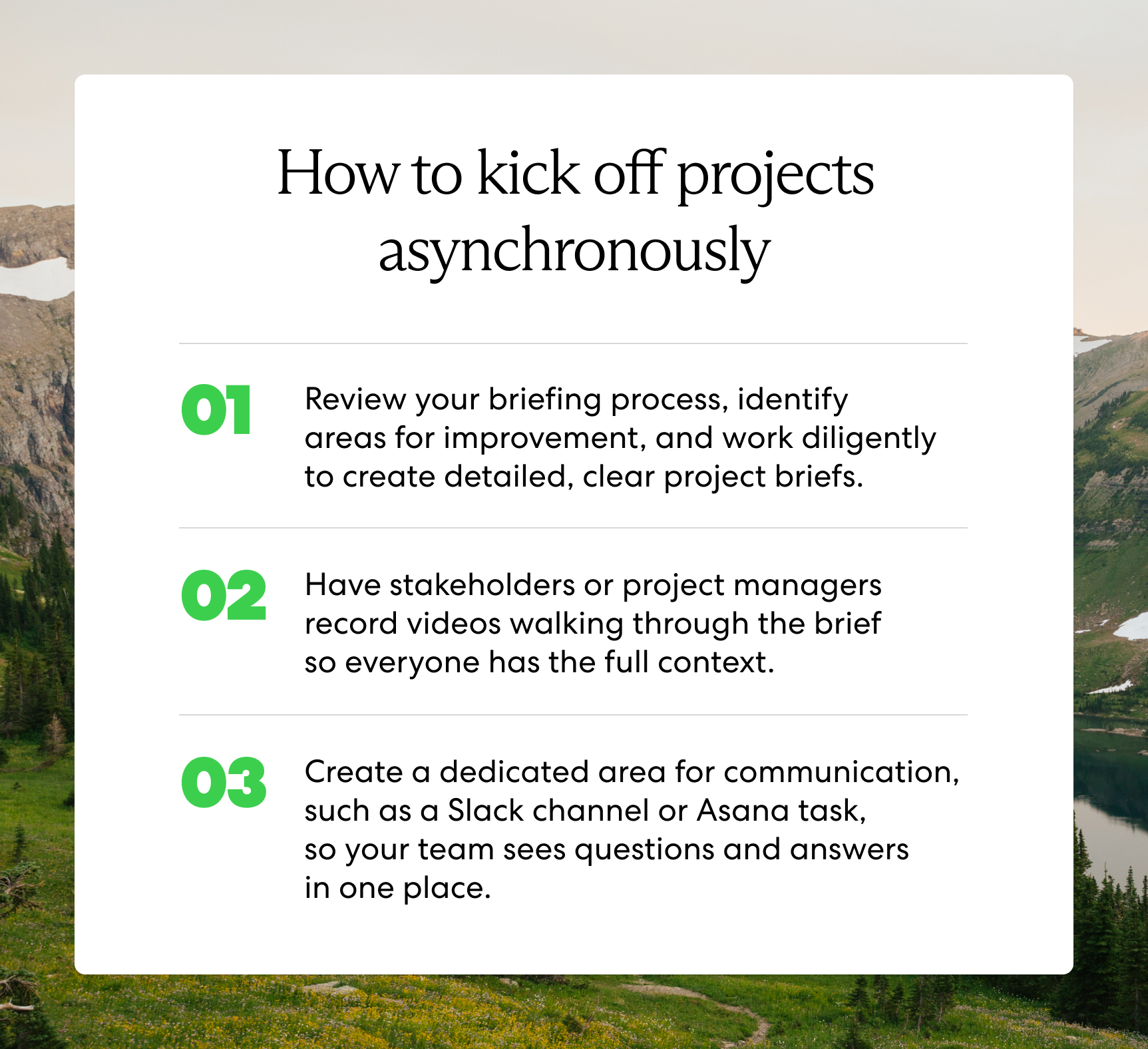
Brainstorming
Getting your distributed team together for a brainstorming session is not only challenging; it may be unnecessary. While brainstorming sessions can spur creativity for some teammates, others are more productive when they have their own time and space to come up with ideas.
Asynchronous collaboration allows space for both. Teammates can jot down ideas in a shared place, like a Google doc, so they can work at their own pace but still build off each other’s thoughts. By allowing for both collaboration and individual concepting, asynchronous brainstorming offers the best of both worlds.
Collecting Feedback
Chances are, your teammates are all too familiar with sitting through lengthy feedback meetings in which only a few minutes are relevant to them. Help them maximize their efficiency by taking an asynchronous approach to feedback. Teammates can leave notes in shared documents, project management platforms, or collaborative boards. When situations require a personal touch, they can record videos to simplify complexities or more clearly dive into nuances.
Five Tips for Asynchronous Collaboration
Once you’ve decided which processes are best suited for asynchronous collaboration, it’s time to execute. Here are five tips to consider when implementing your strategy for asynchronous work.
Set Clear Expectations
Determine the overlap in hours that your global team is available, then be clear about their expectations during that time. Ensure employees know when they need to be available for inter-team communication and when they are free to set their own hours as they best see fit.
Focus on Output, Not Hours
When your team is spread out around the world, working across a wide range of hours, you need to adjust the way you measure employee productivity. Rather than focusing on how many hours your people put in, assess them based on the quality of their work. Doing so will help you better track performance while also aligning you with the modern employee’s expectations:
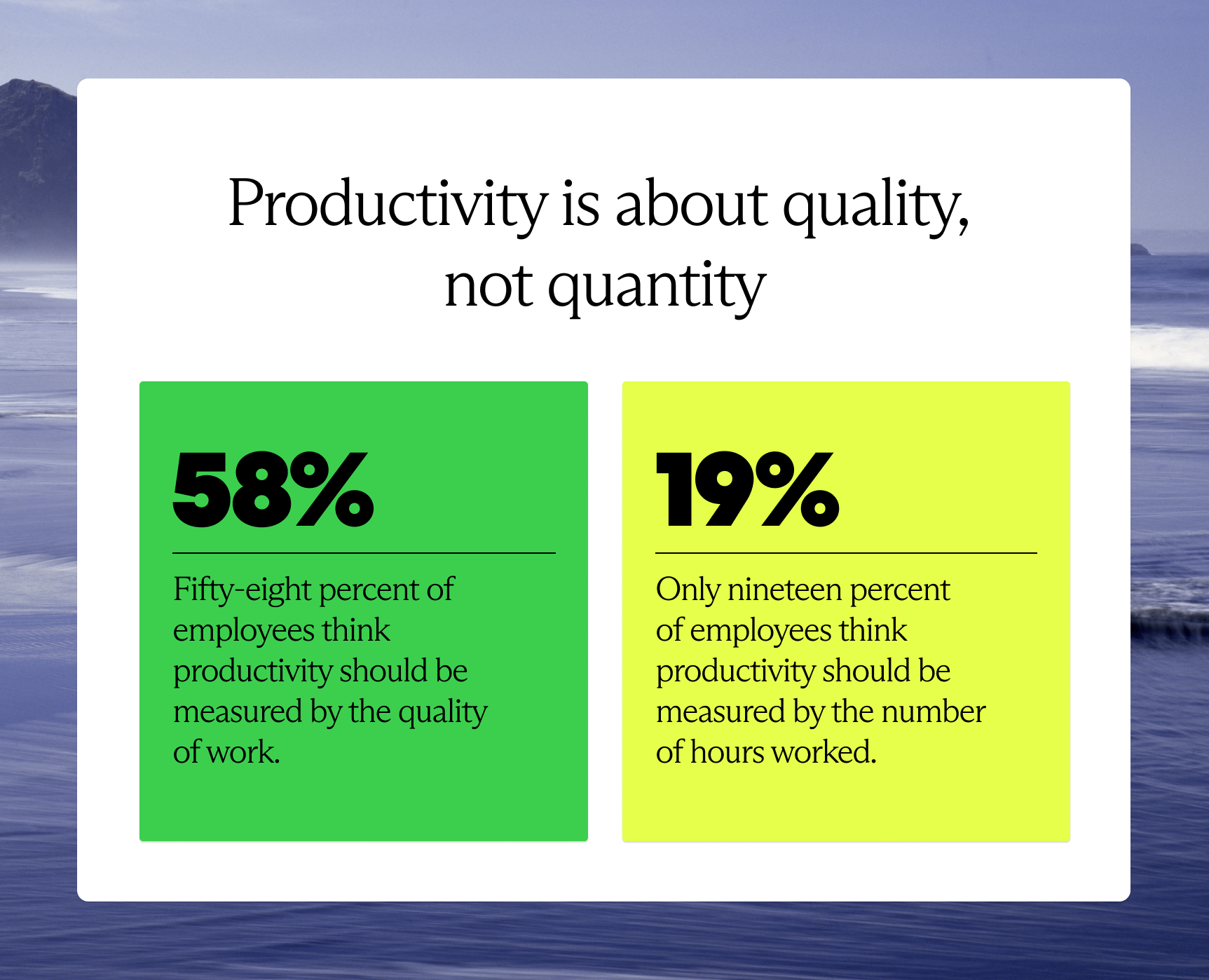
Respect Every Team Member
Finding the sweet spot when your entire team is available may inconvenience certain employees more often than others. For example, if most of your team is located across North America, but a handful of your employees are located in Australia and Japan, it can be tempting to always schedule events when they are most convenient for your teammates in North America—even if that repeatedly forces your team’s Pacific contingent to get up early or work late. Talk to your entire team about rotating between mandatory online hours so the same people aren’t being asked to bend their schedules every time.
Use the Right Tools
Offer your teams everything they need to stay connected even if they aren’t working the same hours. Project management platforms like Asana, Airtable, and Trello give teams one place to align on schedules and workloads, while mainstays like Slack and Zoom are essential for the hours that teams do work together.
Make Processes Easy and Accessible
Fifty-seven percent of employees spend more than 30 minutes daily searching for the information they need to do their jobs. Time lost due to a lack of clarity about projects or tools can increase when teams work asynchronously, as teammates may not have anyone to turn to for immediate help when questions arise.
Whether you record training videos, hold Q&A sessions during working hours, ramp up the thoroughness of project briefs, or develop a library of easy-to-understand instructional documents, make sure talent has access to the information they need to do their jobs—without spending hours looking for answers.
Streamline Global HR with an Expert Partner
Building a global team and setting them up for asynchronous collaboration can be hard work. Working with the right partner makes your job much easier.
Since 2014, Velocity Global has helped over 1,000 companies hire, pay, and support talent across the globe. Our intuitive and fully integrative HR management technology gives you one place to streamline everything from onboarding to payroll while our experts are standing by to help you and your distributed team whenever questions arise—wherever you are.
Reach out today to learn more about how Velocity Global can help you build and run your distributed workforce with ease.


